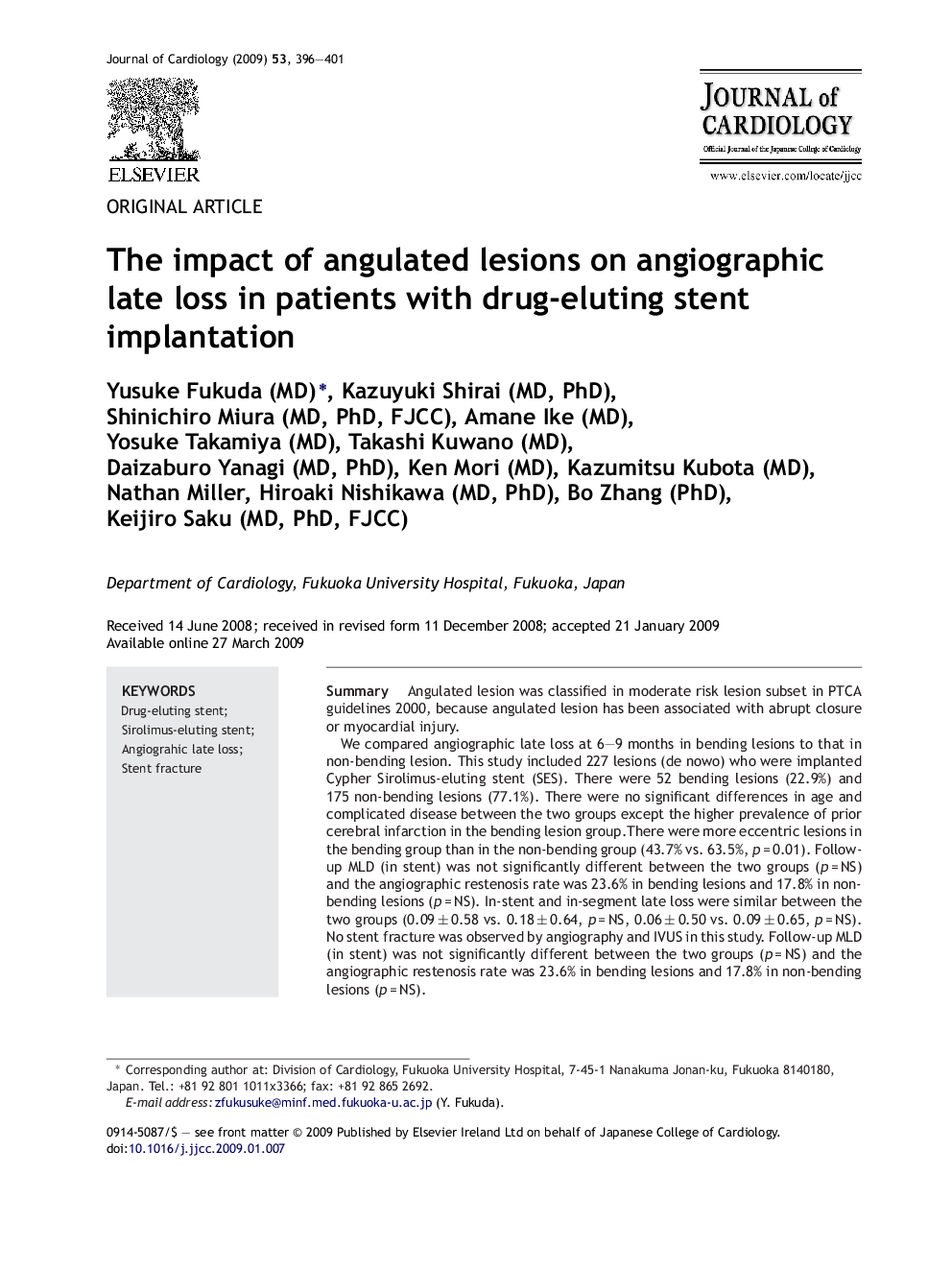| Article ID | Journal | Published Year | Pages | File Type |
|---|---|---|---|---|
| 2963639 | Journal of Cardiology | 2009 | 6 Pages |
SummaryAngulated lesion was classified in moderate risk lesion subset in PTCA guidelines 2000, because angulated lesion has been associated with abrupt closure or myocardial injury.We compared angiographic late loss at 6–9 months in bending lesions to that in non-bending lesion. This study included 227 lesions (de nowo) who were implanted Cypher Sirolimus-eluting stent (SES). There were 52 bending lesions (22.9%) and 175 non-bending lesions (77.1%). There were no significant differences in age and complicated disease between the two groups except the higher prevalence of prior cerebral infarction in the bending lesion group. There were more eccentric lesions in the bending group than in the non-bending group (43.7% vs. 63.5%, p = 0.01). Follow-up MLD (in stent) was not significantly different between the two groups (p = NS) and the angiographic restenosis rate was 23.6% in bending lesions and 17.8% in non-bending lesions (p = NS). In-stent and in-segment late loss were similar between the two groups (0.09 ± 0.58 vs. 0.18 ± 0.64, p = NS, 0.06 ± 0.50 vs. 0.09 ± 0.65, p = NS). No stent fracture was observed by angiography and IVUS in this study. Follow-up MLD (in stent) was not significantly different between the two groups (p = NS) and the angiographic restenosis rate was 23.6% in bending lesions and 17.8% in non-bending lesions (p = NS).Lesion bending is not associated with long-term angiographic late loss after DES implantation. DES may reduce clinical events in patients with bending lesion.
